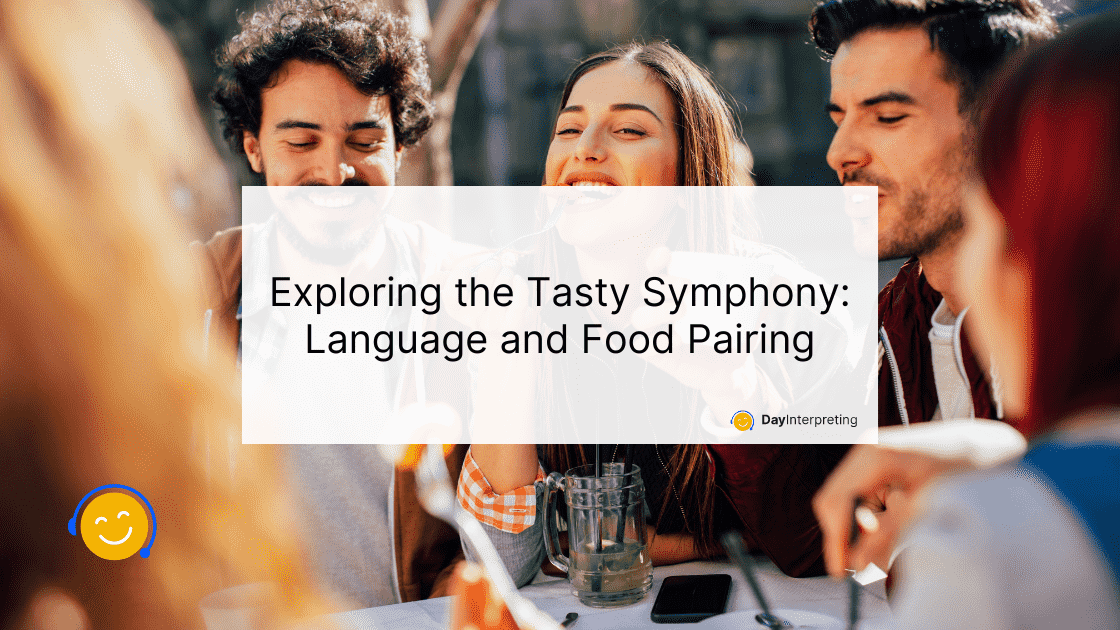Step into the delectable world where language and food unite in a harmonious dance of flavors and expressions! In this delightful journey, we will embark on a culinary adventure that transcends borders and unites people through the universal language of taste. Prepare your taste buds for an exploration of language and food pairing, where we delve into the fascinating connection between languages and the delicious cuisines they represent.
The Multilingual Melting Pot of Language and Food Pairing
Much like cuisines, languages are unique cultural markers that have evolved over centuries, reflecting the diversity and richness of human experiences. Just as every language has its own distinct sounds and rhythms, every cuisine carries the essence of a region’s history, traditions, and ingredients. Let’s take a delicious stroll through the multilingual melting pot and discover the mouthwatering connections waiting to be uncovered.
Spanish Sensations
¡Bienvenidos a la cocina deliciosamente diversa de España! (Welcome to the deliciously diverse kitchen of Spain!) Spanish, a language known for its rhythmic charm, finds its gastronomic counterpart in the vibrant tapestry of Spanish cuisine. Indulge in the tantalizing flavors of paella, a saffron-infused rice dish that sings with the melody of seafood, chicken, and rabbit. As you savor each bite, you’ll understand why Spaniards say “está para chuparse los dedos” (it’s finger-licking good)!
French Finesse
“La vie est trop courte pour boire du mauvais vin.” (Life is too short to drink bad wine.) Ah, the eloquent language of love and the sophisticated world of French gastronomy! From escargot to coq au vin, French cuisine celebrates culinary artistry. As you explore the language, relish the nuances in every “crème brûlée” and “ratatouille.” The French have truly mastered the art of turning a simple meal into a symphony of flavors.
Italian Elegance
“La vita è troppo breve per mangiare male.” (Life is too short to eat poorly.) Italy, the birthplace of pizza, pasta, and gelato, is a linguistic and culinary haven. Dive into the language of amore while savoring a bowl of spaghetti Bolognese or a slice of Margherita pizza. “Mangia bene, ridi spesso, ama molto” (Eat well, laugh often, love much) – an Italian philosophy that resonates through both words and flavors.
Language and Food Pairing Traditions
Beyond the linguistic journey, let’s delve into the heart of cultural food traditions that weave stories of communities and generations.
Picture this – a Japanese tea ceremony, a bustling Indian spice bazaar, or the vibrant celebrations of the Mexican Day of the Dead. Each tradition unfolds a unique narrative that not only tantalizes the taste buds but also unveils the rich history, community bonds, and generational legacies embedded in global gastronomy.
Japanese Tea Ceremony: A Ritual of Elegance and Harmony
Enter the serene world of the Japanese tea ceremony, an ancient practice transforming tea drinking into a meditative art form. Rooted in Zen philosophy, this ritual involves meticulous choreography, from the precise movements of preparing matcha to the elegant presentation of delicate sweets. The ceremony is more than just a tea-drinking occasion; it reflects harmony, respect, purity, and tranquility. Through the language of tea, generations have passed down not only the technique but also the values that echo in every sip.
Indian Spice Bazaars: A Symphony of Aromas and Colors
Journey to the bustling spice bazaars of India, where the air is thick with the intoxicating scents of cumin, cardamom, and coriander. These vibrant markets are not just places to buy ingredients; they are living histories of a country deeply rooted in culinary diversity. As families share traditional recipes and spices are passed down through generations, the spice bazaar becomes a melting pot of flavors and stories. The tales of these aromatic treasures transcend time, connecting communities and weaving a culinary tapestry that spans the vast Indian subcontinent.
Mexican Day of the Dead Feasts: Celebrating Life Through Cuisine
Step into the lively streets of Mexico during the Day of the Dead, a festive celebration that honors departed loved ones. Beyond the vibrant costumes and marigold-adorned altars lies a feast that speaks volumes about Mexican culture. Families gather to prepare traditional dishes like tamales, mole, and pan de muerto, not just as offerings but as a way of remembering and celebrating the lives of those who have passed. The culinary traditions of the Day of the Dead are a testament to the resilience and joy embedded in Mexican heritage, creating a link between past and present, life and death.
Language Expressions and Culinary Wisdom
Languages are filled with expressions that beautifully capture the essence of culinary experiences.
Delve into the linguistic realm, and you’ll discover a treasure trove of expressions that beautifully encapsulate the essence of culinary experiences, offering glimpses into cultural attitudes towards food and life itself.
Spanish Flair: “Pan Comido” – Making Life a Piece of Cake
In the colorful tapestry of the Spanish language, the expression “pan comido” takes center stage. Translated as “eaten bread,” this phrase effortlessly conveys the simplicity of a task, making it as easy as enjoying a slice of cake. Picture a warm, fresh loaf of bread – a staple in Spanish cuisine – disappearing effortlessly, much like completing a straightforward assignment or overcoming a simple challenge. It’s an eloquent way of saying, “No worries, it’s a piece of cake!” With its rhythmic cadence, the Spanish language adds a sprinkle of charm to everyday expressions, turning mundane tasks into delightful adventures.
French Elegance: “Joindre l’utile à l’agréable” – Balancing Work and Pleasure
In the sophisticated world of the French language, the expression “joindre l’utile à l’agréable” captures the art of combining the useful with the pleasant. Imagine the meticulous balance of flavors in a perfectly crafted French dish, where each ingredient plays a crucial role in creating a harmonious whole. This phrase extends that culinary finesse to life itself, suggesting the wisdom of blending work with pleasure. Much like savoring a delightful meal, the French approach to this expression celebrates finding joy in the daily grind, transforming tasks into enjoyable endeavors. It’s an invitation to infuse elegance into the mundane, turning even the most routine activities into moments of pleasure.
From Cultural Exploration to Culinary Expertise
The journey through language and food pairing reveals the deep connections between culture, communication, and cuisine. But for those wishing to move beyond appreciation and into active creation, culinary arts courses offer a structured path to mastery. These courses provide a blend of practical skills and theoretical knowledge, allowing students to delve into the techniques and histories that underpin global gastronomy. By understanding the language of food on a deeper level, aspiring chefs and culinary enthusiasts can transform their passion into a profession, crafting dishes that tell stories and bridge cultures.
Wrapping Up on Language and Food Pairing
As we conclude our flavorful expedition into language and food pairing, we celebrate the shared joy that language and cuisine bring to our lives. Whether you’re sipping espresso in an Italian café, indulging in sushi at a Japanese izakaya, or savoring the warmth of a homemade curry, remember that every dish carries the whispers of a language and a culture waiting to be explored. So, let your taste buds be your guide as you embark on a culinary adventure that transcends borders, connecting us all in the delightful language of food. Buon viaggio culinario! (Happy culinary journey!)





0 Comments